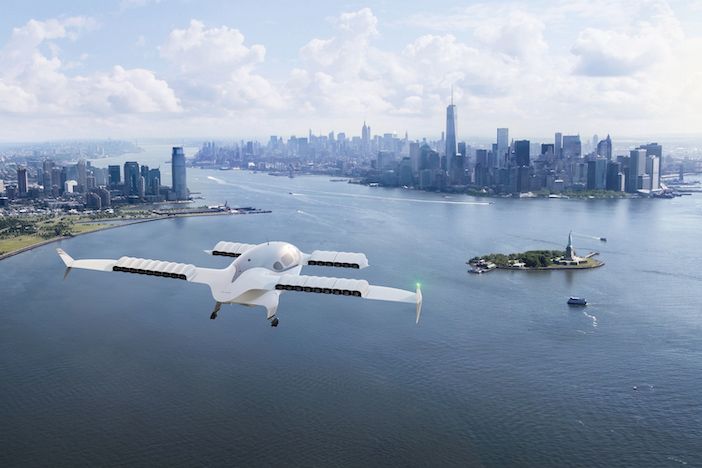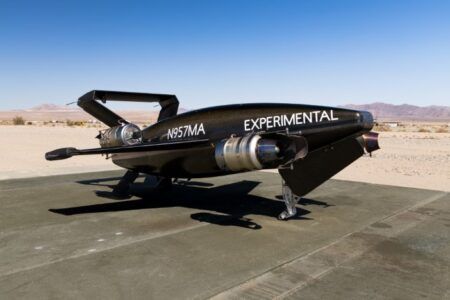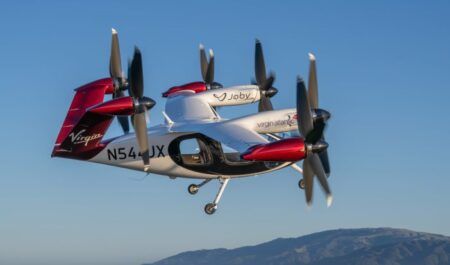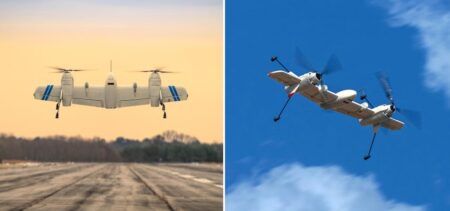Lilium has started to build propulsion systems for its Jet eVTOL aircraft after the successful conclusion of ground testing for several components and subsystems.
The Lilium Jet’s battery-electric powered propulsion systems are being assembled at the company’s propulsion facility next to its headquarters in Wessling, Germany.
The Lilium Jet eVTOL aircraft will be able to carry five passengers, with a planned range 250km (155 miles) and a cruise speed of 280km/h (175mph) at an altitude of up to 10,000ft. The first manned test flight is expected to take place in late 2024 and type Certification with EASA is earmarked for late 2025.
The company conducted a flight testing program in Spain with a technology demonstrator last year.
Yves Yemsi, chief operating officer of Lilium said, “The start of propulsion assembly represents a significant step towards industrializing the Lilium Jet. In the coming weeks, we will be systematically working towards validating our manufacturing capabilities and preparing to deliver the propulsion units for initial aircraft integration and type-certification testing.”
In the first phase of assembly, the propulsion system’s rotating parts, including the shaft, magnets and titanium compressor fan are assembled and mated with the associated static components such as the e-motor stator and guide vanes (for structural support and cooling). These are then integrated into the engine.
In the next phase later this year, the electric engines will be integrated into the Lilium Jet’s propulsion mounting system, the flap structure that forms the rear part of the wings and front canards and that houses the propulsion and vectoring systems responsible for vertical and horizontal flight.
Propulsion subsystems testing
The start of assembly follows the testing of propulsion subsystems by suppliers. This includes the bespoke motor, developed and built by Denso and Honeywell, the titanium compressor fan, developed and built in collaboration with Aeronamic and electric motor bearings built in collaboration with SKF.
In July this year, Lilium tested a full-size prototype of the aircraft’s Jet’s fan and stator at Germany-based aviation powertrain developer Jetpel’s facilities. The ground testing program confirmed the fan design’s operating parameters.
Mechanical, electrical, and thermal performance testing has also started on a prototype motor. The Lilium Jet e-motor has been designed to deliver a power density of over 100kW from a system weighing just over 4kg (9 lbs).
Fuselage construction
The start of propulsion systems manufacturing follows the commencement of fuselage assembly for the Lilium Jet earlier this month.
The company is making seven aircraft for Type Certification testing of the Lilium Jet.
The fuselage was developed in collaboration with and is being built by Aciturri at its facilities in Valladolid, Spain. The fuselage is planned for delivery to Lilium facilities in Wessling, Germany in the coming months so assembly of the first Lilium Jet can start before the end of this year.
Aciturri is also Lilium investor and designs and manufactures major airframe components for the Airbus A350, A320, A400M, Boeing 787 and Embraer KC390 programs, amongst others.
Maria Eugenia Clemente, CEO of Aciturri Aerostructures: “Aciturri is committed to playing a leading role in the transformation of sustainable regional air mobility, which supports Europe’s goal of achieving climate neutrality.”
Lilium, which was founded in 2015, raised US$119 million of investment in its latest funding round in November 2022.
Want to know more about the Lilium Jet? Read ATI‘s interview with its chief technology officer Alastair McIntosh.





